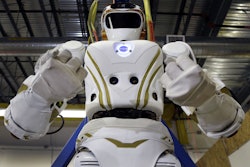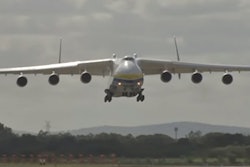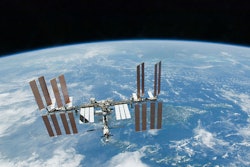On Thursday, an exciting addition to the International Space Station ran into some trouble. The Bigelow Expandable Activity Module, or BEAM, was attached to the space station but failed to inflate, forcing a delay while NASA engineers try to figure out what went wrong. NASA has been in a $17.9 million contract with Bigelow for the BEAM since January 2013.
So what is the BEAM, why is it any better or different than a non-inflatable room on a space station, and what went wrong?
Bigelow makes several different types of inflatable space habitats, including the as-yet untested B330, designed to be a 12,000 cubic feet free-floating space station. Their ultimate goal is to build habitats appropriate for deep space, the moon, or Mars. The NASA contract with the BEAM is the first time NASA has used an inflatable habitat.
If this works, expandable habitats for long-term stays in space could be much more affordable and much faster to build than traditional space stations. Like a lot of space experimentation, though, it is in some ways a gamble – and there was always a chance that something would go wrong.
This morning, astronaut Jeff Williams began to slowly inflate the habitat from its folded size of 5.7 feet to its fully-deployed length of 13 feet. A valve let air slowly enter the chamber, while Mission Control monitored the pressure. The ground crew noticed that pressure readings were not proceeding as expected; meanwhile, the structure wasn’t expanding as expected either.
The crew and ground control called the inflation off, and will spend 24 hours trying to determine the problem.
PD&D Editor Lee Goldberg, also a former spacecraft engineer for the Mars Observer program, suggested that if the habitat used retaining cables to secure it in its compressed configuration during launch, one of them might not have been cut when it was time to unfold the assembly. In this case, the pyrotechnic cutter used to break the cable might not have gone off, not allowing the habitat to expand fully.
It could also be a case of improperly placed thermal blankets blocking the habitat from inflating somehow. A less likely explanation could be that a portion of the habitat became misaligned during launch.
In the 24 hours following the project’s commencement this morning, the crew will probably examine the habitat’s structure, as well as the pressure valves and associated sensors. After the inflation is completed, the astronauts can enter the BEAM and check for leaks. In order to keep the astronauts out of danger, no one will be permitted inside the chamber until it has been in place for a week. Even afterward, it will only be entered for monthly checks to examine whether the size of the chamber has changed.
The goal is for the habitat to remain attached to the space station for two years, after while NASA will examine whether it would be appropriate to go ahead with more inflatable modules.






















